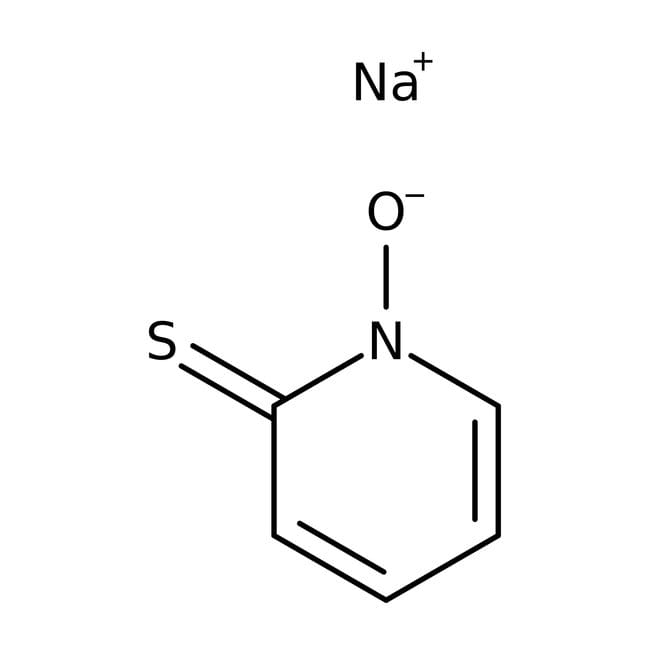Search Thermo Fisher Scientific
2-Mercaptopyridin-N-Oxid Natriumsalz, 40 % aq. soln., Thermo Scientific Chemicals



2-Mercaptopyridin-N-Oxid Natriumsalz, 40 % aq. soln., Thermo Scientific Chemicals
Chemikalien-Kennzeichnungen
Spezifikationen
Beschreibung
This Thermo Scientific Chemicals brand product was originally part of the Alfa Aesar product portfolio. Some documentation and label information may refer to the legacy brand. The original Alfa Aesar product / item code or SKU reference has not changed as a part of the brand transition to Thermo Scientific Chemicals.
2-Mercaptopyridin-N-Oxid-Natriumsalz ist aufgrund seiner antimikrobiellen Aktivität einer der aktiven Bestandteile in Farbe, Dichtstoffen, Shampoo, Klebstoff und Aerosol. In Biochemie-Studien wird es zum Transport von Zink in Zellen verwendet. Es wird auch verwendet, um zweizähnige Oxothiolan-Chelate mit Übergangsmetallen zu bilden. Es dient als Stabilisator und Viskositätsregulator in schwach basischen oder neutralen Medien.
Löslichkeit
Mischbar mit Ethanol, Propylenglycol, Polyethylenglycol und Dimethylsulfoxid. Nicht mischbar mit flüssigem Paraffin und Olivenöl.
Hinweise
Hygroskopisch. Nicht kompatibel mit starken Oxidationsmitteln.
Abbildungen
Dokumente und Downloads
Zertifikate
Häufig gestellte Fragen (FAQ)
Zitierungen und Referenzen
Sicherheit und Handhabung
Classification of the substance or mixture
CLP classification - Regulation(EC) No 1272/2008
Label Elements
Signal Word
Danger
Hazard Statements
H302 + H312 + H332 - Harmful if swallowed, in contact with skin or if inhaled
H315 - Causes skin irritation
H317 - May cause an allergic skin reaction
H319 - Causes serious eye irritation
H372 - Causes damage to organs through prolonged or repeated exposure
H410 - Very toxic to aquatic life with long lasting effects
EU Specific Hazard Statements
EUH070 - Toxic by eye contact
Precautionary Statements
P280 - Wear protective gloves/protective clothing/eye protection/face protection
P301 + P330 + P331 - IF SWALLOWED: rinse mouth. Do NOT induce vomiting
P302 + P352 - IF ON SKIN: Wash with plenty of soap and water
P304 + P340 - IF INHALED: Remove person to fresh air and keep comfortable for breathing
P305 + P351 + P338 - IF IN EYES: Rinse cautiously with water for several minutes. Remove contact lenses, if present and easy to do. Continue rinsing
P312 - Call a POISON CENTER or doctor if you feel unwell